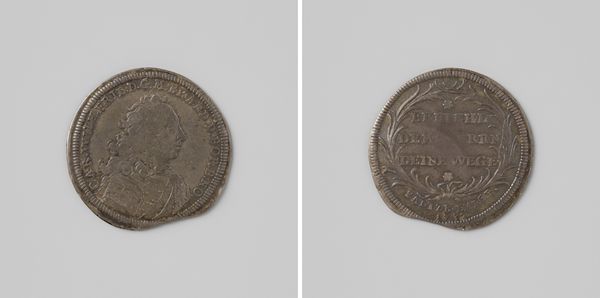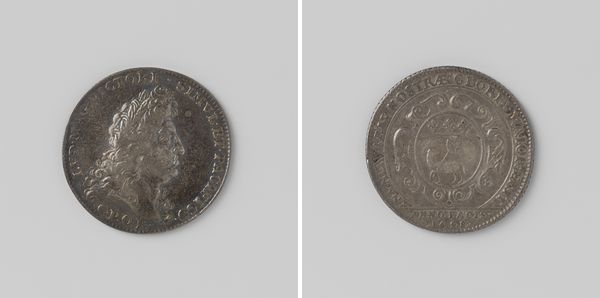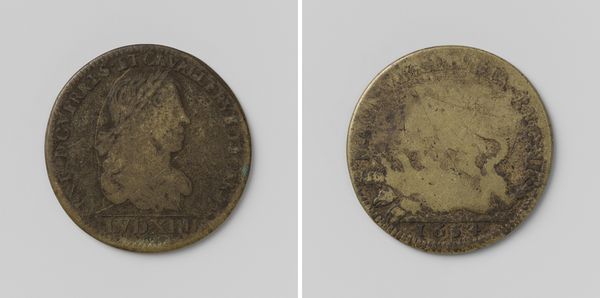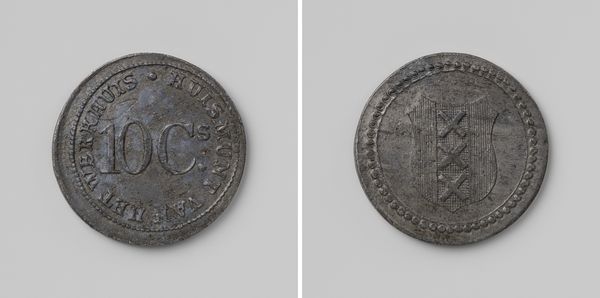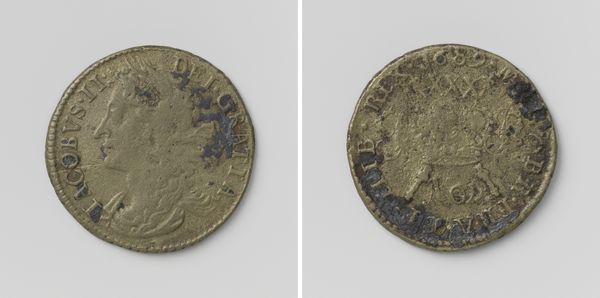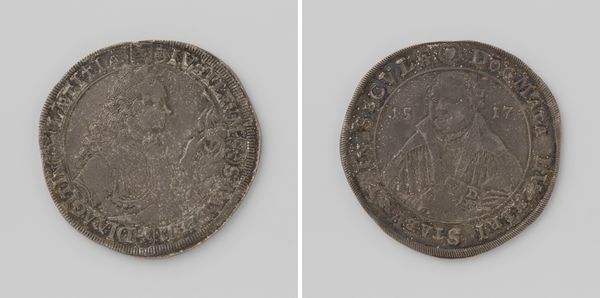
print, metal, sculpture, engraving
#
portrait
# print
#
metal
#
sculpture
#
ancient-mediterranean
#
sculpture
#
history-painting
#
engraving
Dimensions: diameter 2.4 cm, weight 3.41 gr
Copyright: Rijks Museum: Open Domain
This spade guinea was made in 1800 by George & Timmins Simcox. Note the laurel wreath framing the profile. Wreaths in art serve as potent symbols of triumph and honor. The use of laurel wreaths can be traced back to ancient Greece, where they were awarded to victors in athletic competitions and military heroes. This symbol, deeply rooted in classical antiquity, has resurfaced throughout history, notably during the Roman Empire, and continues to evolve through the Renaissance. The wreath motif has been employed to lend an aura of authority to leaders, reflecting a complex interplay between ambition, heritage, and cultural memory. We see this non-linear, cyclical progression, as symbols resurface, evolve, and take on new meanings in different historical contexts.
Comments
No comments
Be the first to comment and join the conversation on the ultimate creative platform.
